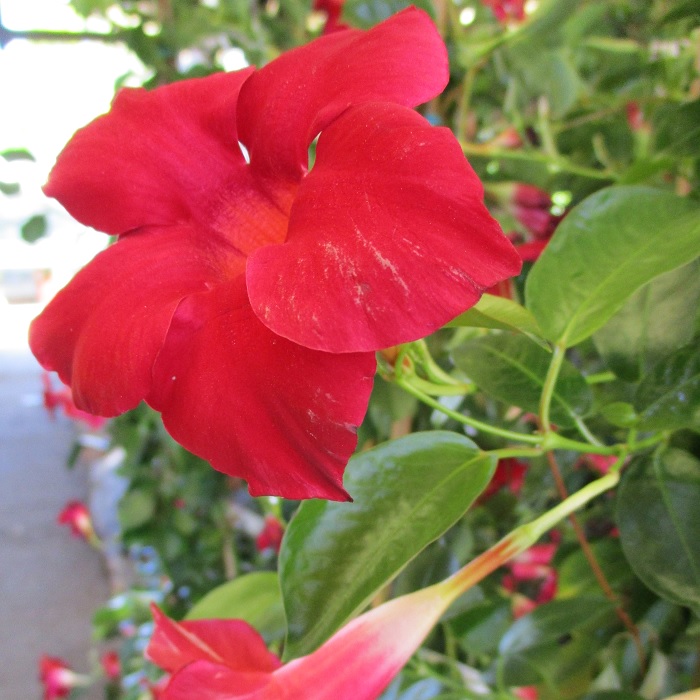UNITED STATES—Urban homes are innately close to other urban homes. Newer homes are even closer to each other than older homes are, and are more imposing. Establishing or maintaining privacy can be a challenge, especially for high windows in narrow spaces. Even though home builders prefer to place windows strategically, some windows invariably face into neighboring windows or gardens.
Trellised vines are a popular but rarely effective remedy to this dilemma. The narrow spaces between houses and below the eaves can be dark enough to inhibit growth. Consequently, vines are typically sparse or bunched on top of their trellises. Their most vigorous growth is often awkwardly long shoots trying to find a way out of the shade. Vines are not exactly easy to work with anyway.
There are of course exceptions. With regular maintenance, some finely textured vines that are reasonably tolerant of shade can be effective for downstairs windows. (Upstairs windows are out of reach.) If shown very regularly, English ivy on lattice works almost like a hedge. (Ivy does not fill in on more open trellises.) Trellised star jasmine is even better, but needs more depth (front to back).
Yet, with few exceptions, big evergreen shrubs or small evergreen trees that tolerate shade are more practical. They support their own weight, so they only need to be pruned for confinement and clearance from the houses that they provide privacy for. Some shrubs and trees should be pruned to stay at the desired height, so that superfluous upper growth does not shade out lower growth.
The various podocarpus are some of the better small trees for narrow spaces between houses because they are somewhat tolerant to shade, and are so easily pruned into shape. Some of the taller and more upright pittosporums work nicely in sunnier spots. Arborvitae tolerates more shade, and naturally stays narrower. Since some of these better options might grow slowly, they can be planted with faster growing shrubbery that can be pruned back, and eventually removed as the preferred plants mature.
Highlight: mandevilla
‘Alice Dupont’ mandevilla that was so popular through the 1980s was already a cool vigorous but not too overwhelming vine, with big clear pink radial flowers. It grows rather vigorously to upstairs eaves, and tends to get bunched where it reaches the top of its support. Modern cultivars with red, white or bright pink flowers are more compact and tame, and can stay below downstairs eaves.
The wiry twining stems neither root into their support like ivy does, not get bulky enough to constrict and crush their support like wisteria does. However, old vines might get thick enough to split lattice apart. New plants are greener in partial shade, although they will probably climb to where they get full sun exposure. The glossy evergreen foliage is surprisingly sensitive to even mild frost.
Mandevilla is tropical, so enjoys warmth, but not aridity (minimal humidity). Overly exposed foliage can get scorched by hot weather. Sporadic bloom continues from spring through autumn, with more prolific bloom phases in response to warm weather. Unfortunately, mealybug, aphid, scale and whitefly enjoy warm weather too. While pruning, the caustic white sap can be a toxic nuisance.






